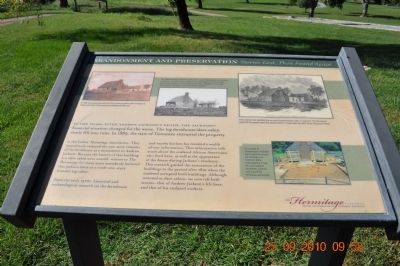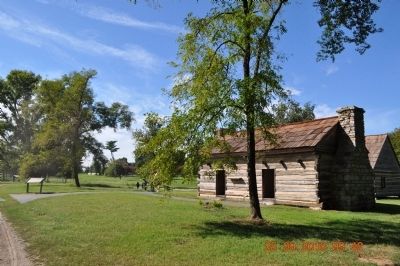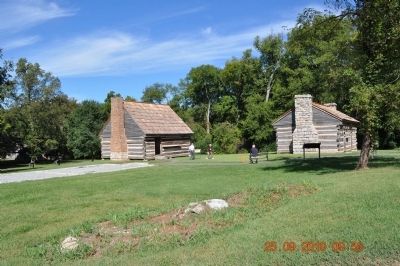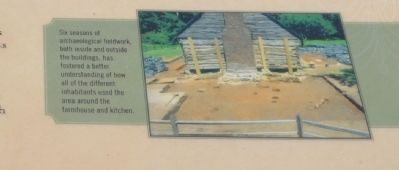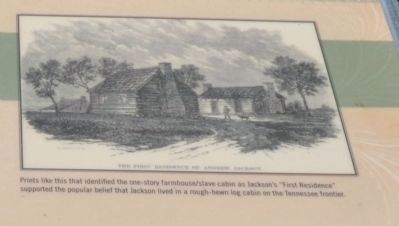Hermitage in Davidson County, Tennessee — The American South (East South Central)
Abandonment and Preservation
Stories Lost, Then Found Again
Since the early 1970’s, historical and archaeological research on the farmhouse has revealed a wealth of new information. This information tells much about the enslaved African Americans who lived here, as well as the appearance of the house during Jackson’s residency. This research guided the restoration of the buildings to the period after 1821 when the enslaved occupied both buildings. Although restored as slave cabins, we now tell both stories-that of Andrew Jackson’s life here, and that of his enslaved workers.
Topics and series. This historical marker is listed in this topic list: African Americans. In addition, it is included in the Former U.S. Presidents: #07 Andrew Jackson series list. A significant historical year for this entry is 1889.
Location. 36° 13.014′ N, 86° 36.657′ W. Marker is in Hermitage, Tennessee, in Davidson County. Marker can be reached from Rachel's Lane. Marker on path near slave cabins/Jackson's first Hermitage Home. Touch for map. Marker is in this post office area: Hermitage TN 37076, United States of America. Touch for directions.
Other nearby markers. At least 8 other markers are within walking distance of this marker. The Belted Galloway (here, next to this marker); A home for Jackson’s Slaves (a few steps from this marker); The Hermitage Landscape (a few steps from this marker); Land Conservation at The Hermitage (within shouting distance of this marker); Field Quarter Trail (within shouting distance of this marker); Growing Cotton (within shouting distance of this marker); A Future President's Home (within shouting distance of this marker); The First Hermitage (within shouting distance of this marker). Touch for a list and map of all markers in Hermitage.
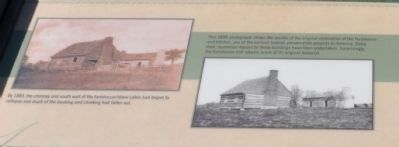
Photographed By Sandra Hughes, September 25, 2010
6. Abandonment and Preservation
By 1889, the chimney and south wall of the farmhouse/slave cabin had begun to collapse and much of the daubing and chinking had fallen out.
This 1898 photograph shows the results of the Orginial restoration of the farmhouse and kitchen one of the earliest historic preservation projects in America. Since then, numerous repairs to these building have been undertaken. Surprisingly the farmhouse retains much of its original material.
Credits. This page was last revised on February 7, 2023. It was originally submitted on February 10, 2012, by Sandra Hughes Tidwell of Killen, Alabama, USA. This page has been viewed 568 times since then and 9 times this year. Last updated on March 13, 2015, by J. Makali Bruton of Accra, Ghana. Photos: 1, 2, 3, 4, 5, 6. submitted on February 10, 2012, by Sandra Hughes Tidwell of Killen, Alabama, USA. • Bill Pfingsten was the editor who published this page.
